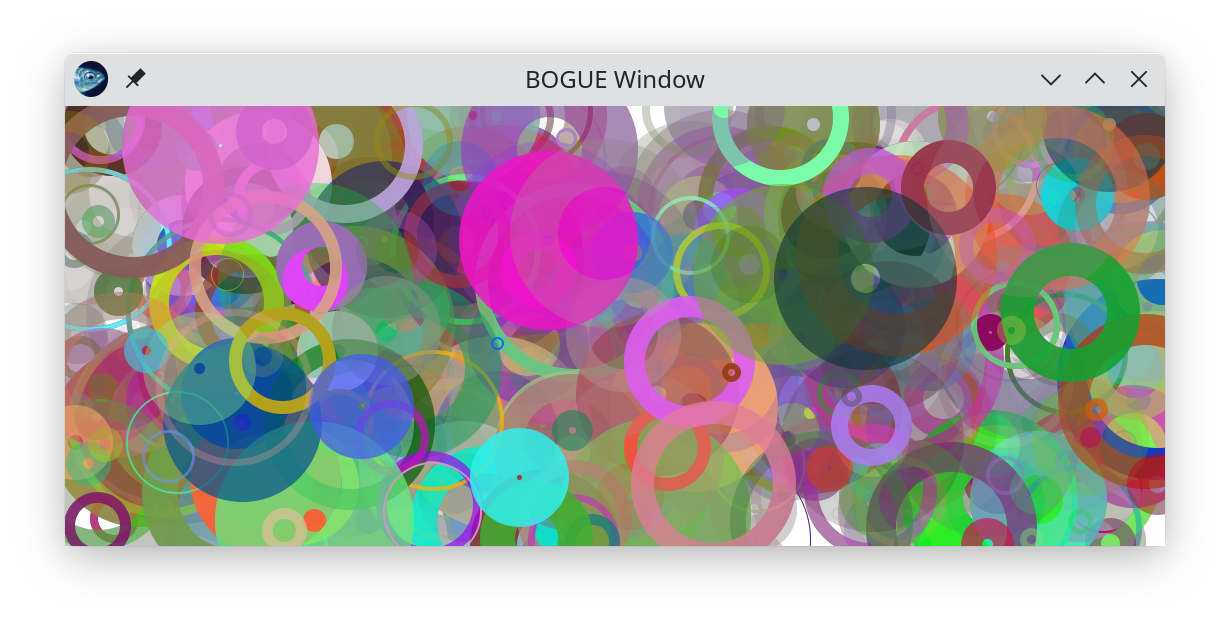module Sdl_area: sig .. end
SDL Area widget.
You can use an Sdl_area widget to draw whatever you want using all the power
of the
SDL
renderer API.
Technically, an Sdl_area widget contains an SDL texture and sets it as a render target.
SDL commands are sent to the Sdl_area using Sdl_area.add (and stored in a command
queue). You can also use Sdl_area.add_get in order to get a handle on the command
in case you reserve the possibility to remove the command with
Sdl_area.remove_element.
type
val create : width:int ->
height:int ->
?style:Style.t -> ?timeout:int -> unit -> t
Create an empty SDL area. Note that the given size (width,height) is the
logical pixel size of the area. The physical size, to be used for most
SDL rendering functions, can be obtained with Sdl_area.drawing_size.
val update : t -> unit
Force the area to be re-drawn at the next graphics frame.
val clear : t -> unit
Clear the area (this removes all commands from the render queue).
val add : t -> ?name:string -> (Tsdl.Sdl.renderer -> unit) -> unit
add area ~name f adds the arbitrary command f to the render queue.
The command should be fast, otherwise it will block the UI when the queue
is executed. For long drawings, it's better to split them into many
commands. If you need the possibility to remove a command later, use
Sdl_area.add_get instead.
val cache : t -> unit
This will insert a special command in the queue that will save the texture
obtained at that point, and clear all previous commands in the
queue. Commands added to the queue after the cache invocation are not
removed. Further updates to the area will show the cached texture and then
execute the rest of the queue. Use this only for performance reasons when
the rendering queue uses a lot of power and/or time.
val clear_cache : t -> unit
Clear the graphics cache generated by the Sdl_area.cache command. It has no
effect if no cache was created. Clearing the cache does not restore the
commands in the queue that were used to draw it.
Drawing functions and utilities
Shortcuts to some
drawing functions from the Draw module.
For more sophisticated shapes (and faster rendering), consider using the
tsdl_gfx external library or,
better, the companion bogue-cairo library.
val drawing_size : t -> int * int
Size in physical pixels of the target SDL texture on which you can
draw. You may also use Tsdl.Sdl.get_renderer_output_size, if used inside
the Sdl_area command queue.
val pointer_pos : t -> Tsdl.Sdl.event -> int * int
Position of the pointer (mouse or touchscreen that has generated the
event) in physical pixels, with respect to the top-left corner of the
Sdl_area. Should be called only after the Sdl_area has been rendered.
val to_pixels : int * int -> int * int
Convert BOGUE logical coordinates into pixel coordinates usable for the
SDL area. Same as Draw.to_pixels.
val draw_line : t ->
color:Draw.color -> thick:int -> int * int -> int * int -> unit
draw_line c ~color ~thick (x1, y1) (x2, y2) draws a line of given
color and thickness from point (x1, y1) to point (x2, y2).
val draw_rectangle : t ->
color:Draw.color -> thick:int -> w:int -> h:int -> int * int -> unit
draw_rectangle c ~color ~thick ~w ~h x0 y0 draws a rectangle of the
given line thickness inside the box of top-left coordinates (x0,
y0), width w and height h.
val fill_rectangle : t ->
color:Draw.color -> w:int -> h:int -> int * int -> unit
val draw_circle : t ->
color:Draw.color -> thick:int -> radius:int -> int * int -> unit
draw_circle c ~color ~thick ~radius (x0, y0) draws a circle of the given
line thickness and color inside the disc of center coordinates
(x0, y0) and given radius.
An example of draw_circle is provided by Example #50 (it can be run from
the terminal with boguex 50), which produces the following picture:
The source code for all boguex examples is
here.
val fill_circle : t -> color:Draw.color -> radius:int -> int * int -> unit
Draw elements
The command queue can be manipulated. An element of this queue is called a
draw_element.
type
val add_get : t ->
?name:string ->
?disable:bool -> (Tsdl.Sdl.renderer -> unit) -> draw_element
val disable : draw_element -> unit
Mark an element for skipping its execution.
val enable : draw_element -> unit
val remove_element : t -> draw_element -> unit
val add_element : t -> draw_element -> unit
Append the element to the end of the command queue.
val has_element : t -> draw_element -> bool
Check whether the element belongs to the command queue.
Direct access to the texture
val get_texture : t -> Tsdl.Sdl.texture option
val set_texture : t -> Tsdl.Sdl.texture -> unit
